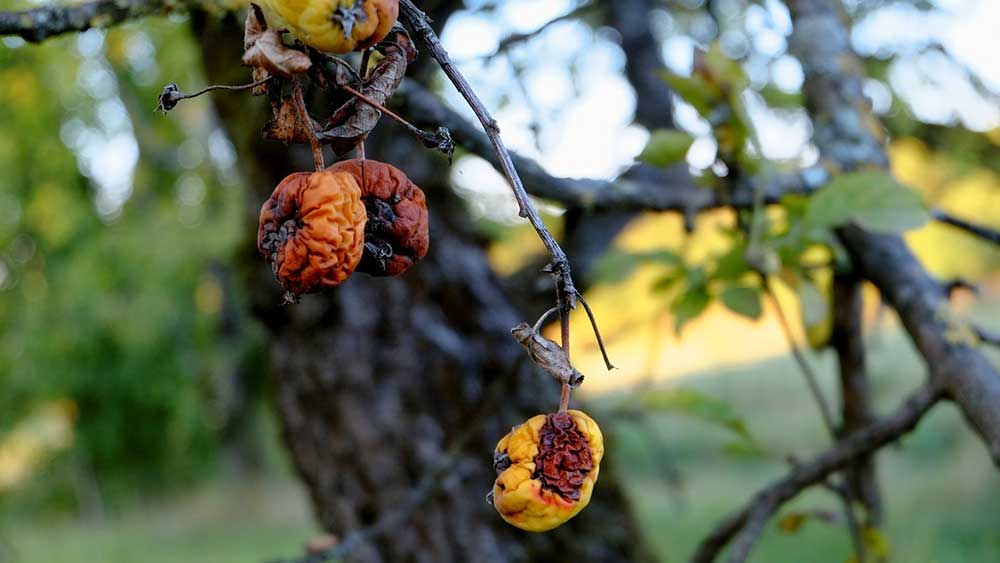What are some guidelines on monitoring the potential for disease outbreaks?
Disease is the manifestation of multiple factors coming together. In the great majority of cases, a plant pathologist will focus only on matters relating to the status of the pathogen, including the:
- Identification of the pathogen(s)
- Inoculum levels or population density and proximity to the crop
- Race(s) or strain(s) of the identified pathogen(s)
- Presence or absence of infection-promoting agents, such as vectors and their populations
- Weather factors which create environmental conditions conducive to disease
- Direct environmental conditions promoting disease (e.g. wet soil, dense canopy, etc.)
- Host species, variety or cultivar and relative susceptibility ratings

However, it is also necessary to monitor more general health factors as well. This is a critical area that is too often overlooked in favor of focusing on the pathogen. These are nearly innumerable, but such factors which warrant attention include:
- Conducting a soil mineral analysis
- Conducting a tissue mineral analysis of foliage, petioles, and developing fruit
- Analysis of water chemistry and mineral constitution
- Analysis of water for evidence of water molds, nematodes, herbicides, and other pathogens and foreign agents
- Analysis of terrain for high spots, and orientation relating to direction land faces
- Identifying presence or absence of restriction layers or high-water table
- Identifying rootstock and scion-rootstock combination
- Consideration of climate zone and extreme weather patterns, such as the prevalence of freezing events, hot weather, and severe winds.
- Identifying whether the area is a positive eddying zone where particulates and inoculum swirls and concentrates.
- What is the current state of sprinkler irrigation, and the potential for wetting events which can germinate and spread disease?
- What is the state of flood irrigation, and does it result in uneven water distribution or ponding, creating furrows and basins which expose roots and make them vulnerable to physical damage?
- What is the state of mini-sprinklers and drip systems?
- Are there excessive shifts in the drying-wetting cycles of scheduled irrigation?
- Does monitoring of irrigation take into account soil texture, depth, and size of plants?
- What is the current state of populations of nematodes, water molds, and other soil-borne pathogens?
The great majority of diseases are opportunistic, and this predisposition is often related to imbalanced nutrition and the creation of a hypersensitized host. Thus, of the concerns listed above, the following are of the foremost priority when it comes to field disease monitoring:
- Complete analysis of soil minerals
- Measuring the presence and activity of plant-parasitic nematodes, water molds, and or other soil-borne pathogens
- Complete tissue mineral analysis
- Disease identification
Why do some fields incur disease problems seemingly every year?
This is a broad question with multiple, specific possibilities. But in my experience, I have observed repeated errors on the part of both PCAs and growers, which fall into the following categories:
Disease control is still viewed by most as requiring nothing more than the application of a magic bullet fungicide or bactericide.
Disease control, when instituted in its most responsible and efficacious manner, must encompass a multitude of factors. It goes well beyond mere consideration of the presence or absence of a pathogen and its corresponding inoculum levels. The current approach built around the use of fungicides or bactericides in response to infections is comparable to a doctor who relies on drugs to treat the symptoms of a disease, while ignoring the factors contributing to the underlying malady, including nutrition, stress, sleep, and other related factors.
Most agriculturists are drilled by so-called professionals to believe that there is a direct relationship between the presence of a pathogen and a resulting infection.
Such a view of the pathogens and disease as a simple matter of cause and effect underestimates the more complex reality of predisposition of a plant to infection, and the opportunistic nature of most pathogens. This narrow view leads the public to believe that a complete focus on the pathogen is “where it’s at,” so to speak.
This is a particularly common viewpoint among those who refer to soil as ‘dirt,’ and have not had the hands-on exposure necessary to appreciate the complexities of real-world farming. If this narrow, tunnel vision view of plant disease does not change, growers will never be able to implement the natural control-management systems that are particularly integral to the organic agriculture movement. These systems by necessity must encompass the considerations of the many associated and contributing factors relating to plant disease.
If we are going to achieve precision agriculture, then we must dispense with the dogma of absolute pathogenicity and adopt the more open-minded view of prevention via the minimization of predisposing factors.
Most agriculturists, because they are conditioned to place their faith in magic bullet spray programs, overlook the grave importance and necessity of practicing sound sanitation.
One of the worst scenarios for exploding epidemic proportions of a disease is to have the inoculum within the canopy of a tree or vine, or near a susceptible crop. How often have we listened to a chemical representative tout the merits of a fungicide and display supportive, university-driven data, and then proceed to cover the specifics of rates and timings of application. For many, this is the entirety of their approach to controlling disease.
Yet, efficacious control of a disease is next to impossible, let alone economically viable, unless sanitation measures are adopted. For example, persistent canker diseases such as anthracnose of stone fruits, can perpetuate within infected wood and become a perennial canker. The same is true of Cytospora canker, Nectria canker, fire blight, and brown rot. Without necessary sanitation, one would have to apply magic bullet chemicals every 3 to 5 days for extended periods to minimize infection and still run the risk of a lost battle.
What is the most common, technical problem in all of commercial agriculture?
Consider a person taking a drive in a car. On a country road, we can drive this car at a slow and comfortable speed and minimize the opportunity for accidents. But then we start to press the accelerator down, further and further. As you accelerate from a measured pace of 25 mph on that country road to the car’s peak speed, you enter a phase of imbalance. As you demand more and more from your automobile, the opportunity for another set of factors to become limiting increases logarithmically.
The radiator can no longer provide sufficient cooling, and the engine becomes overheated and less efficient. The brakes can no longer keep up with the car’s speed. Steering is now a split-second proposition, with the slightest lag in concentration running the risk of a life-and-death crash.
In this case, gasoline is our analogy for the use of nitrogen (N) in agriculture. The more we accelerate growth and crop production with nitrogen, the more we need to pay judicious attention to every other parameter which contributes to the overall operation of the plant’s machinery. Yet it is so common for agriculturists to put the pedal to the metal with UAN-32, anhydrous ammonia, ammonium sulfate, or urea. Then they sit back and wonder why they suddenly have alternate bearing, noninfectious bud failure, blossom-end rot, or any number of other diseases.
The most consistent and recurring problem stems from growers taking a plant species, which in nature produces non-economic yields and quality, and through agronomic manipulation, create an economic output which is oftentimes ten times greater than production under a natural setting. In so doing, the grower must not only install controlled irrigation, but supplement with copious amounts of fertility. The most common fertilizer used to achieve these economically viable yields is nitrogen (N). When the grower crosses the line of natural growth and enters the realm of highly productive, commercial growth, by necessity, he or she automatically crosses into the realm of imbalanced nutrition. It is this imbalanced nutrition which is a leading contributor to the severity of the many diseases which impact commercial growers and their ultimate profitability.




